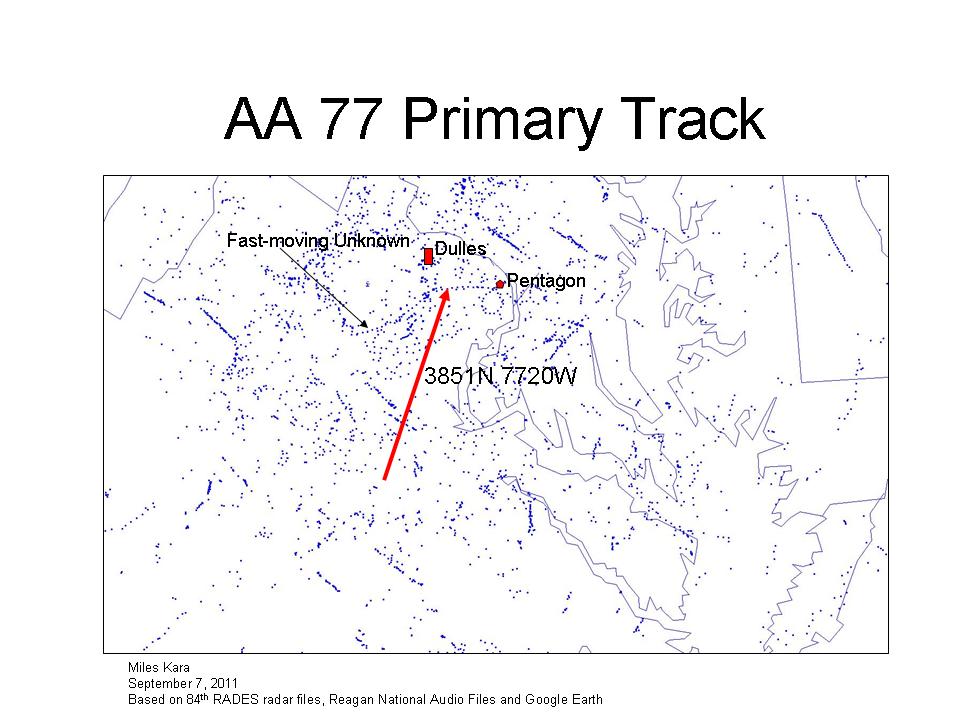Introduction
I recently published the third in a series of articles about 9-11 from the perspective of the Northeast Air Defense Sector (NEADS), Mission Crew Commander, Major Kevin Nasypany. Concurrently, I have been rereading Does God Play Dice?, The New Mathematics of Chaos, by Ian Stewart. While reading, it struck me that the Langley scramble on 9-11, wayward by anyone’s definition, can be described using the language of chaos, in this case linearity and nonlinearity.
Linear processes or procedures
In multiple articles over the past two years I have cataloged and discussed the procedures used by government and military officials at all levels in response to the attack on the morning of September 11, 2001. Among those were the Federal Aviation Administration’s primary net, the National Military Command Center’s air threat conference call, and the national level’s Secure Video Television System (SVTS). All were unsuited to the task, each operated in isolation, one from the other.
Notably, one linear procedure not used was the hijack protocol, for two reasons. First, it was cumbersome, out of date, and no one was quite sure at the Federal Aviation Administration who the hijack coordinator was. Second, Boston Center could not wait for higher headquarters to act and short circuited the process.
At Langley Tower, personnel struggled that morning with what to do after the order to scramble the air defense fighters came down. The controllers defaulted to an existing linear procedure; it seemed the logical thing to do, one that sent the Langley fighters out to sea, despite the scramble order.
To find out why that happened we turn to Ian Stewart for an explanation.
Linearity, in context
We live in a nonlinear world, yet the mathematical simplifications that allow us to understand that world are largely linear. Further, the institutions we establish to manage life in a nonlinear world operate by establishing set procedures, SOPs in the vernacular, so that people know what to do without constant attention from leadership and management. Such procedures become routinized into tactics, techniques and procedures (TTP) and generally work well to manage the day-to-day activities needed to get through one work day and on to the next. Except when they don’t.
Stewart had this to say about linearity. “In classical times, lacking techniques to face up to nonlinearities, the process of linearization was carried to such extremes that it often occurred while the equations were being set up (all emphases here and after are as in the original). In the management world that equates to writing SOPs or TTPs based on the observed activities of people doing their jobs. If something works, make it routine.
Stewart continued, “Few asked themselves what the long-term future might be for a method which–to be brutal–solved the wrong equations.” Stewart could well be speaking for any number of managers, leaders, and supervisors when he wrote, “‘Give me an answer,’ is the demand. So the linear theory obliges, hoping that nobody will notice when its the wrong answer.”
A digression
Here I digress for a moment as an example from 9-11 pops into mind. Richard Clarke, ordered, “I want the head of every agency” to participate in his SVTS conference that was activated at 0925 and convened at 0940, the exact time frame that Langley Tower, Norfolk TRACON and the Langley fighters were struggling with the mandate of the scramble order. Clarke got his answer and it was the wrong one. The leadership at each agency was isolated from its work force. Nowhere was that more evident than at FAA headquarters, as documented in primary source audio files. “Jeff is being pulled away….you know, everyone just left the room.” They left because they were on their way to Clarke’s SVTS conference. 0949 Pulling Jeff away
Back to Stewart
Stewart then became explicit in his tutorial. “Today’s science shows that nature is relentlessly nonlinear.” He elaborated, “Classical mathematics concentrated on linear equations for a sound pragmatic reason; it couldn’t solve anything else.” Substitute the word “management” for “mathematics” and the word “procedures” for “equations” and you end up with a statement of how management, be it civilian or military, government or private, operates. By and large, management is not capable of managing nonlinearity and certainly not the chaos that often ensues.
Stewart then became even more explicit. “Linearity is a trap…if you decide that only linear equations are worth thinking about, self-censorship sets in. Your textbooks fill with triumphs of linear analysis, its failures buried so deep that the graves go unmarked…” Now, again substitute “procedures” for “equations” and reread Stewart’s words from a manager or leader perspective.
With that background, borrowing the language of chaos theory from Stewart, we can now turn to a detailed look at the Langley scramble.
Langley Scramble
Here is an audio clip of the scramble order as heard at Norfolk TRACON. 0924 Langley Scramble Norfolk Tower Such an order, by SOP at the time, required four specific pieces of information; a direction, a distance, an altitude, and a target. NEADS had only two of the four and, to its considerable credit, broke the habit of linearity and broadcast the order specifying only a direction and an altitude, heading 010 (northerly), flight level 290.
All concerned parties in the Langley area–Langley Tower, base operations, air defense detachment, Norfolk TRACON, and Giant Killer–heard that order. The first entity to take action was Langley Tower. The Tower struggled briefly with what to do and defaulted to existing TTP, linearity.
Three times Commission Staff visited Langley Tower. Three times we climbed the Tower and discussed the Langley scramble with personnel on duty that day. Three times we were told that they did what they did with due deliberation and that, moreover, they would do it again. The established procedure was to enter a flight plan of “090 for 60” (easterly for 60 nautical miles) into the FAA system, and that is what they did.
Taped to the console, as of the staff’s last visit in 2004, was that same flight plan, “090 for 60.” The Langley Tower story was consistent, the controller on duty looked at the supervisor for confirmation when the scramble order came in. Both looked at the standard flight plan and without hesitation the controller entered a plan into the system that was nearly 90 degrees askew from what the scramble order intended. How can that happen?
Following the language and logic of Stewart, an established procedure prevailed. The nonlinear NEADS initiative to issue a partial scramble order did not translate to similar action at Langley Tower.
There was rationalle behind the Tower’s decision to go with the existing process. First, the scramble order did not specify a distance. It took a direction and a distance to enter a flight plan into the FAAs air traffic control system. Second, they knew from experience that it often took several tries to find a flight plan that would be accepted by the system. The standing procedure of 090 for 60 was a known quantity, one already in the system and fool proof. Third, they knew from long experience that it didn’t matter, someone else would tell the fighters where to go, once airborne.
And that’s exactly what happened. Norfolk TRACON gained radar contact while the fighters were lifting off and when they reached the SOP climb out point, runway heading to 4000 feet, the TRACON controller asked the lead pilot which way he wanted to go. Absent any other information, the pilot and the controller agreed that the flight plan was later information than the scramble order. 093100 Langley What Heading would like hand off Giant Killer
And that’s how the Langley fighters ended up heading for the military training area Whiskey 386 and the NEADS controllers “had no idea why.’ 0933 No idea why
Lesson Learned
“Linearity is a trap,” Stewart advised. That advice is applicable to leaders and managers at all levels as they establish SOPs and develop TTPs to manage daily activity. Typically, exercises and training emphasize procedures, to develop habit. A better solution may be to make exercises nonlinear, to develop the skills necessary to recognize that nonlinear, even chaotic, situations require nonlinear responses.
Epilogue
At the same time Norfolk TRACON and the Langley fighters agreed on a flight plan of “090 for 60” Danielle O’Brien at Dulles TRACON sounded the alarm about a fast-moving, primary-only target fast approaching. O’Brien, in one of the definitive nonlinear actions of the morning, picked up the phone and alerted anyone that was listening. Here is her warning as immediately acknowledged and then acted on by Reagan National Tower and TRACON. 093222 AA77 Danielle Heard at Reagan We See Him Krant Tape
When O’Brien made the warning call AA 77 was just passing over Fairfax, Virginia. It was already east of Dulles and was soon to cross inside the beltway. Here is a Google Earth plot showing the relationship.
Here is a screen print from the radar files depicting all primary radar returns in the area from 0928-0938 EDT. The primary-only track of AA 77 is annotated to show the approximate time of the O’Brien alert and the tracks relationship to Dulles and the Pentagon.
O’Brien’s alert was one of two definitive nonlinear actions by FAA personnel that day. The other was the action of Boston Center to call NEADS directly about AA 11 not quite an hour earlier. NEADS would hear about the fast-moving target announced by O’Brien almost three minutes after the warning; not from Dulles, not from Reagan National, not from Washington Center, not from Herndon Center, not from the National Military Command Center, but from, once again, Boston Center. 093536 AA77 Scoggins VFR 6 Miles
In the language of chaos theory, strange attractors, indeed.


